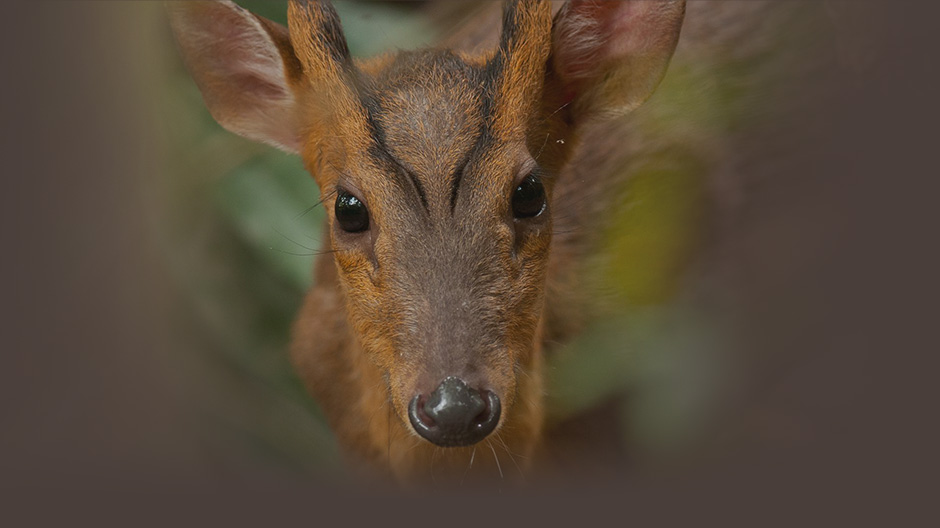時隔150年後,美國和加拿大的原住民部落再度結盟,簽署《北方部落美洲野牛復育協議》(Northern Tribes Buffalo Treaty),計畫在兩國原住民保留地或共同管理土地上,進行復育美洲野牛的保育行動。
文化、地景難切割 印地安部落要找回美洲野牛
這些部落上一次簽署和平協議是在1855年,當時他們劃定了一大片共同狩獵區域,擁有並管理美加邊界的草原,總面積達到630萬公頃(大約是黃石國家公園的3倍大),致力於保存部落文化與生活方式。
這次,他們在美國蒙大拿州布朗寧市的印第安黑腳族領地簽署新協議,同意攜手合作,並建立永久聯盟,藉由共同參與會議與對話,在北美大平原這個區域進行長期的野牛復育和草原保育。美國北方的部落和加拿大的原住民也藉此協議,支持部落青年教育與和文化復興。除此之外,該協議也透過媒體和公關活動,在國際間推動野牛復育。
野生動物保育協會野牛計畫主管凱斯奧內(Keith Aune)表示,「這是歷史性的一刻,我們希望這股力量能推動大平原部落之間的保育運動。」奧內也身兼國際自然保育聯盟(IUCN)野牛專家小組的主席以及美國野牛協會發言人。
大草原的象徵 野牛串起土地記憶
幾萬年來,美洲野牛造就了北美大草原生態系,也讓原住民跟土地緊密地連接在一起。野牛影響了植物群落、養份的運輸和循環,創造了棲地多樣性,讓草原鳥類、昆蟲和小型哺乳動物得以生存,也提供人類與其他大型動物豐富的食物資源。但自從19世紀,歐美移民開始屠殺野牛,牠們就從這塊土地上消失,造成生態改變與原住民文化的損失。
在簽署儀式上,印第安血族部落長老里羅里特貝爾(Leroy Little Bear),同時也是加拿大萊斯布里奇大學的名譽教授表示,該協議是5年來的成果結晶。「這是非常草根的努力,」他說,「北方的平原文化有很大一部份是圍繞著野牛而存在,長老們都覺得年輕一代似乎遺忘了我們固有的文化和語言。」
「野牛帶來了生態平衡!」里特貝爾說。「換句話說,當野牛消失時,許多植物、動物和鳥類都會消失;但當野牛出現時,其他生物也會隨之復返。藉由復興與落實北美印第安民族的生存典範,我們發現,永續生活正是印地安民族最基本的生活模式:讓土地儘可能保持潔淨本質,並讓人類與自然生態和平共處。」
「然而,野牛是這個生態情境的要角,它的瀕臨滅絕讓這個生態系出現一個大空缺。野牛復育協議的目的,就是要開始填補這個空缺,讓我們再次與野牛搭檔,找回文化和生態的平衡。」里特貝爾表示。
與「野牛文化」脫節 「野牛牲畜」今佔多數
19世紀北美有千萬頭野牛,然而20世紀初,野牛只剩不到1100頭。 1905年時,美國總統羅斯福、野生動物保育協會(當時名為紐約動物協會)的威廉霍納迪(William Hornaday)以及紐約布朗士動物園的其他權益相關人共同成立了美國野牛協會(American Bison Society,ABS),該協會發展出一套新的保育倫理,致力於避免野牛滅絕。
如今,北美的野牛數量已達數十萬頭,在美國境內、國家公園、野生動物保護區以及部落的土地上,都能發現牠們的蹤跡。不過,大部份的野牛仍然屬於於私人土地的牲畜。野牛從野生動物變成牲畜,也造成原住民與其原本依賴野牛的永續文化產生脫節。
目前只有少數野牛在法律上擁有野生動物的地位,相關的保育工作也繼續朝向維持族群量和保護物種而努力。
就是要「野生的」 部落管理 保護區劃設相輔相成
世界自然基金會(WWF)北部大平原計畫的野牛倡議協調員丹尼斯約根森(Dennis Jorgensen)表示,「WWF很榮幸見證部落之間結為聯盟這歷史性的一刻,未來也將繼續支持野牛復育,並加強部落之間的整體連結。」
美國國家野生動物聯盟,部落夥伴關係的國際主任蓋瑞沃金瑟爾(Garrit Voggesser)表示,「這些部落管理野牛多年,相互合作讓野生的野牛重返大平原。2012年時,曾將黃石國家公園的野牛移到佩克堡保留區,於2013年時又再次移到貝爾納普保留區,這兩次的轉移,正是讓野生野牛回到西部大平原的關鍵。」
「透過部落的領導,不僅能讓野牛回到部落的土地,還能促進野牛現蹤於美國西部的公共土地。」沃金瑟爾說,「這個協議將是促進草原生態系統的恢復,是復興部落文化和歷史的重要一步。」
Native groups from the United States and Canada Monday signed a treaty to establish intertribal alliances to restore the American buffalo on Tribal and First Nations Reserves or co-managed lands in both countries.
The Northern Tribes Buffalo Treaty was signed in Blackfeet territory in Browning, Montana.
The treaty is the first among them in more than 150 years. The last peace treaty signed by these tribes, The Lame Bull Treaty of 1855, established a large common hunting ground and focused on preserving their cultures and ways of life.
Collectively, these Tribes and First Nations own and manage about 6.3 million acres of grassland and prairie on both sides of the border – an area almost three times the size of Yellowstone National Park.
Along with agreeing to work together for bison restoration and grassland conservation on tribal lands, the Northern Tribes Buffalo Treaty encourages youth education and cultural restoration among the tribes.
“This is an historic moment that we hope will translate into a conservation movement among Great Plains Tribes,” said Keith Aune, Bison Program director for the Wildlife Conservation Society, chair of the IUCN Bison Specialist Group, and American Bison Society spokesman.
For tens of thousands of years, buffalo shaped North American prairie ecosystems and linked Native peoples to the land. They affected plant communities, transported and recycled nutrients, created habitat variability that benefited grassland birds, insects, and small mammals, and provided abundant food resources not only for people but also for grizzly bears and wolves.
Following their slaughter by Euro-American settlers in the 19th century, buffalo have been missing from these lands, resulting in ecological change and cultural loss to Native peoples.
Dr. Leroy Little Bear, an elder with the Blood Tribe in Alberta and professor emeritus at the University of Lethbridge who attended the ceremony, told the “Calgary Herald” that the treaty has been in the works for about five years.
“It’s a very grassroots effort,” he said. “Elders were feeling like our younger generation were forgetting a lot of their culture, language and so on. A large part of Northern Plains culture surrounds the buffalo.”
“The buffalo brings about an ecological balance,” said Little Bear. “In other words, when the buffalo is not there, a lot of plants, animals, birds disappear. When it’s there, they seem to come back.”
“Through the renewal and application of North American Indian paradigms, one discovers that sustainability, leaving the land as pristine as possible, and having humans fit themselves into the ecological balance are fundamental to the life-ways of Indian peoples,” he said.
“But the buffalo is a major player in this ecological scenario. The near extinction of the buffalo left a major gap. The treaty on buffalo restoration aims to begin to fill that gap and once again partner with the buffalo to bring about cultural and ecological balance,” Littlebear said.
The Buffalo Treaty is intended to create a lasting alliance among tribes of the northern Great Plains to engage northern Tribes and First Nations in a continuing buffalo conservation dialogue at intertribal meetings.
The treaty advances an international call for the restoration of buffalo through media events and public relations efforts.
After ranging across North America in the tens of millions in the 1800s, by the early 1900s, bison numbered less than 1,100 individuals.
In 1905, President Theodore Roosevelt, William Hornaday of the Wildlife Conservation Society, then the New York Zoological Society, and others convened a group of stakeholders at the Bronx Zoo and formed the American Bison Society. ABS developed a new conservation ethic and helped save bison from extinction.
Today, bison number in the hundreds of thousands in North America, and are found in state and national parks, wildlife refuges, and on tribal lands, but most reside on private lands as livestock.
This has resulted in a disconnect between the bison and the native people and cultures that relied upon them for sustenance. Only a small fraction of today’s bison are legally designated wildlife. Conservation efforts are underway to maintain viable bison populations and preserve the species.
Dennis Jorgensen, Bison Initiative coordinator of World Wildlife Fund’s Northern Great Plains Program said, “WWF is honored to witness the forging of this historic alliance among tribes and will continue to do all we can to support tribal efforts to restore bison and their integral ties to the Tribes and First Nations of the Northern Plains.”
Garrit Voggesser, National Wildlife Federation national director of tribal partnerships said, “Tribes have managed bison herds for years and worked collaboratively to restore wild bison to the Plains. With the transfer of Yellowstone bison to the Fort Peck reservation in 2012 and to Fort Belknap in 2013, important first steps were taken to return wild bison to western landscapes.
“Tribal leadership can not only bring bison back to tribal lands, but can also foster bison restoration to large public landscapes across the West,” said Voggesser. “This treaty will foster and expand the process of restoring a vital part of the prairie ecosystem and crucial part of tribal culture and history.”
※ 全文及圖片詳見:ENS
 網站捷徑
網站捷徑





